In a modern world, there are a plethora of opportunities and options for supplementing your resource supply for domestic use, whether it is in the form of solar energy for electricity, or even small turbines, to hydro power and geo-thermal systems. That said, the options for creating fuel or gas for cooking, heating, or lighting have been more obscure, or difficult to find. Recently, however, some great progress has been made in this area, and one company in particular has been making great progress in the development of a home biogas resource solution that is definitely worth considering. Homebiogas is one of the innovative companies now working hard to provide solutions to residential and rural consumers in the easy production of biogas using organic materials that normally will end up in your garbage or compost.
Home Biogas – Overview
Before highlighting the great solutions that are available for the production of residential biogas, it is important to have some perspective on exactly what biogas is, what it takes to create it, as well as some of the benefits and limitations of use in home environments.
In simplest terms, biogas in general is fuel in the form of gas that is produced by the decay and fermentation of any organic matter. This is very often in the form of methane gas, which is a significant portion of the gas (and the most important component) produced when organic matter breaks down and decays. According to Energypedia, the breakdown of what is produced is “50-75% methane, 25-45% carbon dioxide, 2-8% water vapour”, with other trace gases present – the primary component of interest for fuel and power production is methane. For this reason, the most desirable systems are those that can produce the highest concentrations of methane, while reducing the sulfur content as much as possible.
Production Capacity – How Much Fuel Can I Make At Home
In test environments, the amount of energy available from 1 m³ of biogas is roughly the same as half a liter of diesel fuel, or about 6 kWh of electrical energy, and additionally, one kilogram of biodegradable material produces about around 0.4 m³ (400 liters) of gas. The simple math on these numbers means that 2.2 kg’s of organic material is a rough estimation of what is required to produce the equivalent amount of energy achieved from a half-liter of diesel fuel. This means that for home use, biodiesel has limitations in as much as the scale or size of the systems will be relatively small, and the amount of gas produced will only be sufficient for small domestic use, such as gas stove burners, or gas lighting. As an example, a typical gas
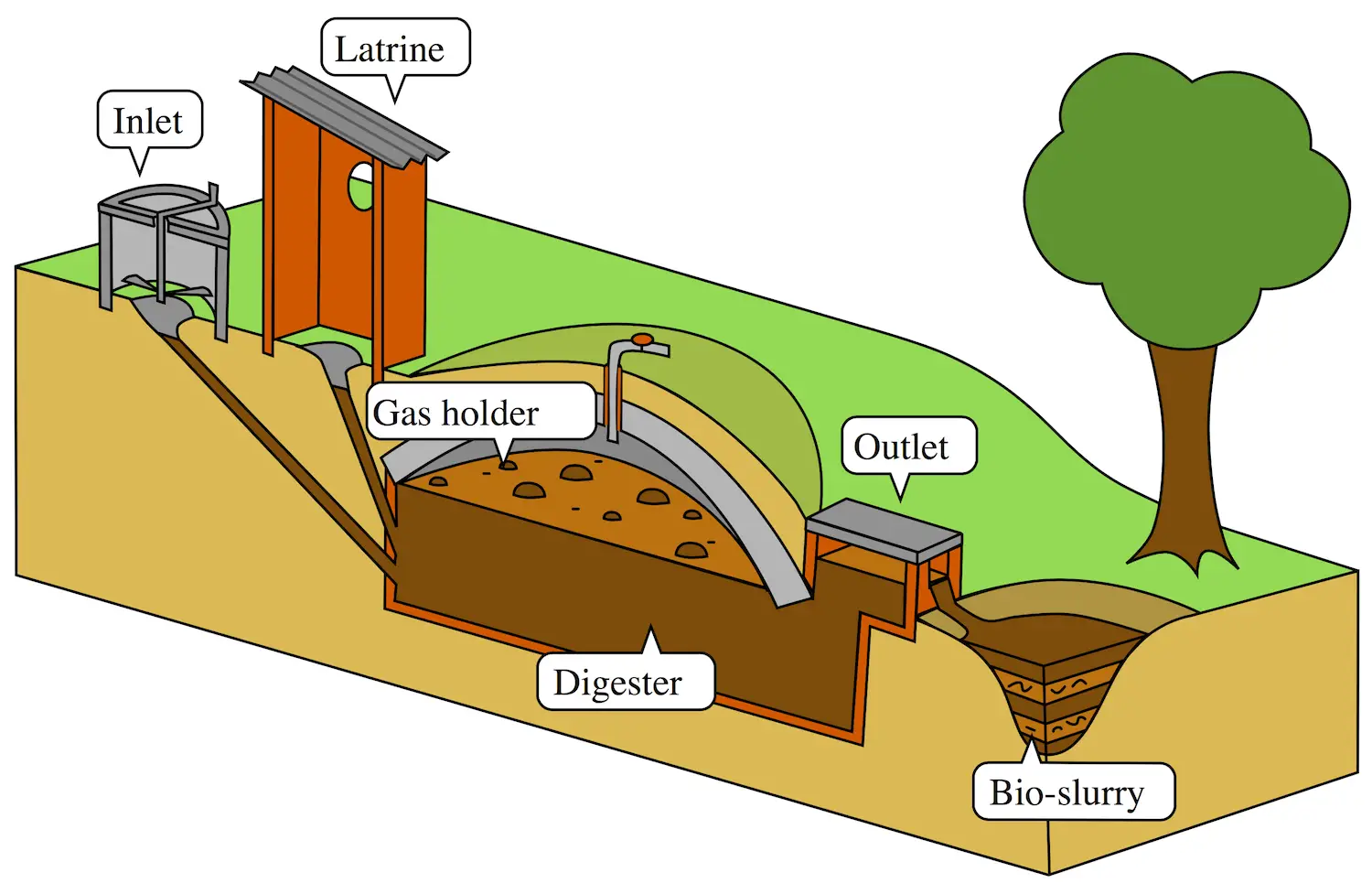
light requires roughly 0.1 m3 (100l) each hour1. In most systems, the means you will only be able to use your stove and/or lights for limited periods with the quantities of gas produced in a small system. Additionally, while biogas is an excellent resource for electricity generation, there will be insufficient gas production in a home based system to be used for any type of electrical generator. It should also be noted that the available biogas-electrical generators in the market today are both expensive, and require specialized maintenance and handling to be used effectively, and are in most cases cost prohibitive.
Like most things in life, there are variances to the effectiveness of every system. With biogas systems, the quantity of fuel that can be produced is dependent on the type of organic material you ‘feed’ it, the length of time it digests, and the temperature at which it will decay/ferment. This means that there are significant benefits to using certain organic materials as ‘feed’ for the system. This does not mean that a home based system will be ineffective, quite the contrary in fact, but it is important to know that access to some types of materials, such as livestock maize feed, can offer a significantly higher yield of biogas from your system, than would basic table scraps and garden waste.
The Home biogas System
The biodigestion systems offered by Homebiogas are a new alternative to composting food and animal waste conveniently, and on your own property. The process, often called Biodigestion, or anaerobic digestion, is the decay and fermentation of organic material by microorganisms in an oxygen deprived environment, resulting in the creation of biogas (as noted 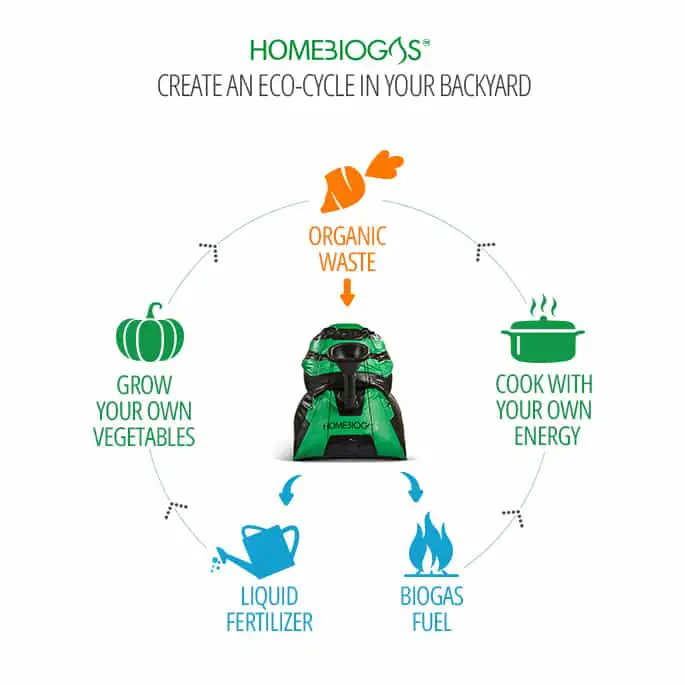 above). One particularly useful and interesting byproduct of the process, is the production of an additional liquid fertilizer, that is powerful, organic and an amazing product to be used for growing more produce in your gardens and flower beds. The Food and Agriculture Organization asserts that a significant amount of the food we produce is actually wasted, with their estimations stating up to one-third of produced food is wasted. The option of putting this wasted material to good use is obviously a great idea!
above). One particularly useful and interesting byproduct of the process, is the production of an additional liquid fertilizer, that is powerful, organic and an amazing product to be used for growing more produce in your gardens and flower beds. The Food and Agriculture Organization asserts that a significant amount of the food we produce is actually wasted, with their estimations stating up to one-third of produced food is wasted. The option of putting this wasted material to good use is obviously a great idea!
The newest and updated version of the Homebiogas systems is there 2.0 system, which increases the capacity and efficiency of their devices, and offers consumers a great solution for creating home biogas from their recyclable organic materials and waste. The newer, more durable, and easily assembled systems offer the potential to create up to three hours of gas per day, which can be used for cooking, or for small gas lighting, which can be purchased separately.
The Homebiogas 2.0 offers users an odorless environment, that is not prone to pests or unsightly piles of matter, from which they can produce not 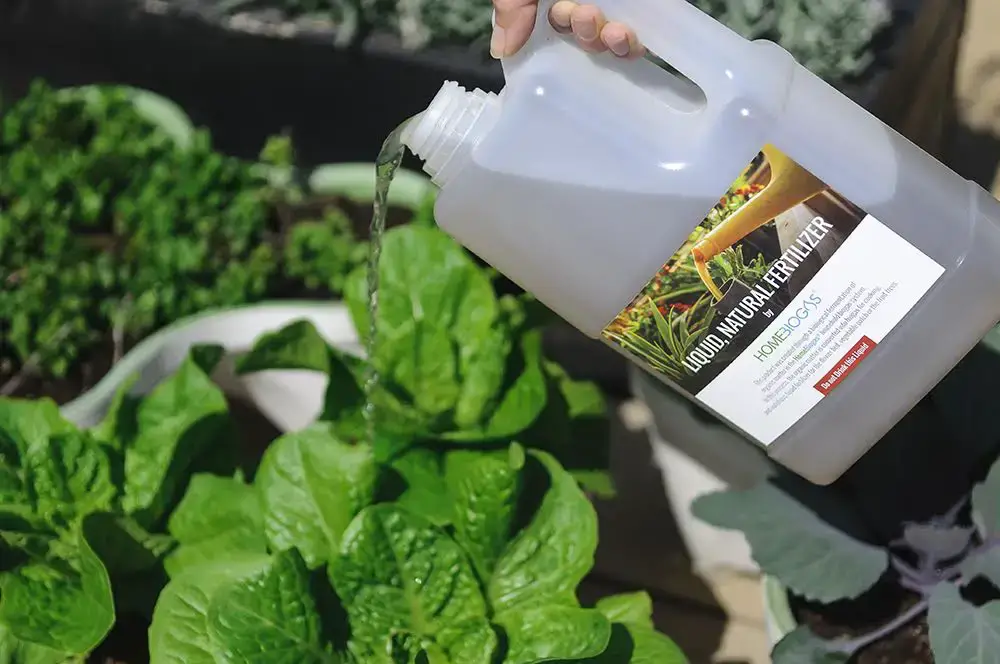 only biogas, but also as a byproduct of the digestion process, an enormously useful and effective liquid fertilizer. This potent and natural liquid fertilizer can be used to feed your existing gardens, plants and flower beds, which in turn will provide you the future resources to feed your biogas device. It is a genuinely innovative concept, and definitely an inspired approach to providing resources to homes and rural communities!
only biogas, but also as a byproduct of the digestion process, an enormously useful and effective liquid fertilizer. This potent and natural liquid fertilizer can be used to feed your existing gardens, plants and flower beds, which in turn will provide you the future resources to feed your biogas device. It is a genuinely innovative concept, and definitely an inspired approach to providing resources to homes and rural communities!
Feed & Input
This system can digest both organic plant material, but also animal and human waste materials. In fact, the varying types of material that is ‘fed’ into the system will dramatically alter the effective gas output – this means, access to high yield materials will improve the system’s overall effectiveness. Homebiogas provides some details on the types of animal manure, an their effectiveness.
Manure Input Yields Potential (Best to Least)
The types of materials that are fed into the digester will result in differing effectiveness, as noted above. The list below highlights the types of animal manures, and the effectiveness of each time in order of gas producing potential:

- Poultry
- Pig
- Cow
- Horse
- Rabbit
- Goat
- Buffalo
- Sheep
Organic Materials Best Potential
- Best: bread, corn, peas
- Lowest: fish, poultry, water, spinach
Home Biogas – Total Production
For many, the practicality of these systems will balance solely on the amount of time and/or gas they can produce. The latest 2.0 version from Homebiogas claims that the system can handle input of materials up to 12 liters food waste or 36 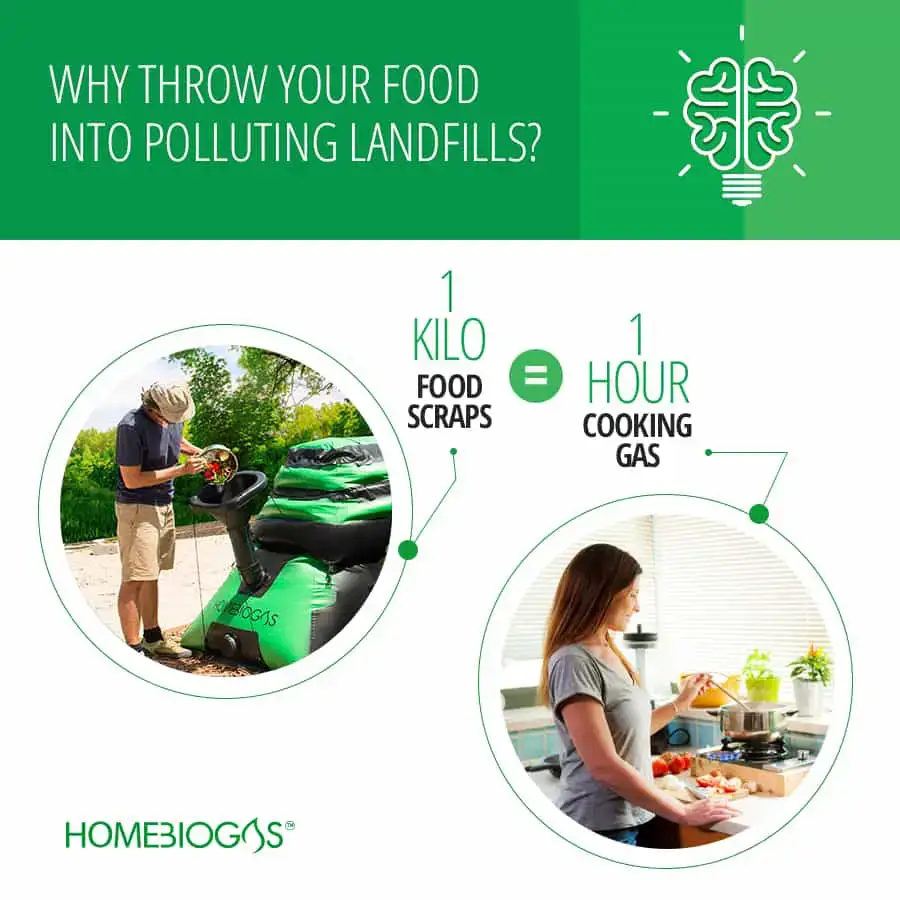 liters animal waste daily. The maximum amount of cooking gas provided is estimated to be three hours of cooking time (a single burner cooking device). Additionally, the additional benefit of the system providing Liquid fertilizer, means there will be a production of this liquid ‘gold’ daily. The specifications provided by Homebiogas suggest that the system will produce an equal amount of liquid fertilizer to the amount of material that is fed into it daily. So, one kilogram of material into the system, will result in a liter of liquid fertilizer (est.) that will be produced.
liters animal waste daily. The maximum amount of cooking gas provided is estimated to be three hours of cooking time (a single burner cooking device). Additionally, the additional benefit of the system providing Liquid fertilizer, means there will be a production of this liquid ‘gold’ daily. The specifications provided by Homebiogas suggest that the system will produce an equal amount of liquid fertilizer to the amount of material that is fed into it daily. So, one kilogram of material into the system, will result in a liter of liquid fertilizer (est.) that will be produced.
Available Appliances and Accessories – Biogas
Home biogas stove devices can be placed within 20 meters of the Homebiogas container/collector (biodigester), and consumes 0.28 m3 of biogas per hour. The stated amount of cooking time for a full biogas container is 3 hours of cooking time using only single burner.
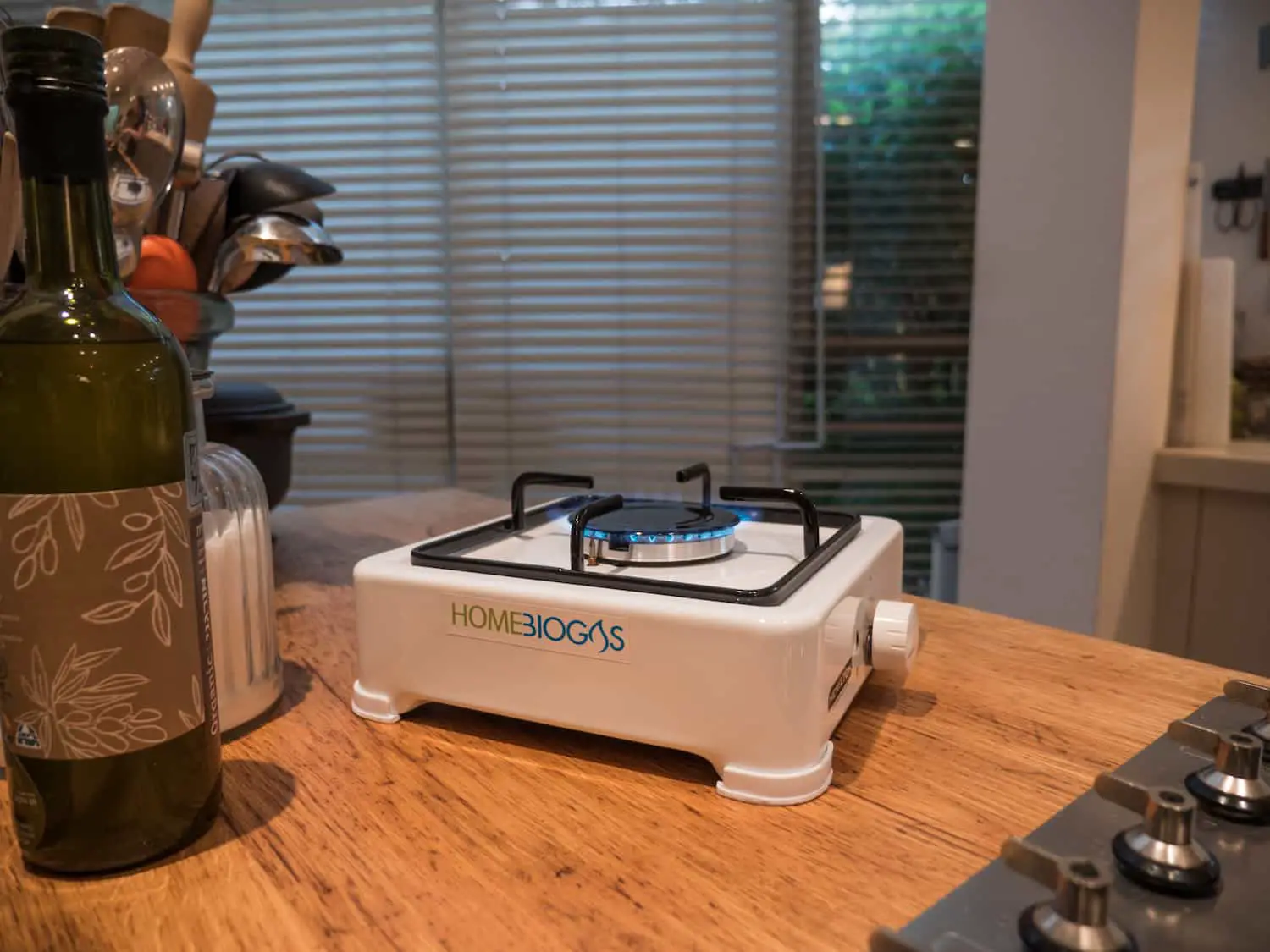 There are several appliances directly available that can make use of the gas produced by the biogas system, including:
There are several appliances directly available that can make use of the gas produced by the biogas system, including:
- Cook top
- Stove
- Gas Lighting
These options are available directly from Homebiogas, or can be purchased from other suppliers of similar products, which can easily be found online. That said, given the excellent and innovative work that is being done by the great people at Homebiogas, it would definitely be worth considering their options, and in some cases they may provide free options at the time of purchase.
Cost and Availability
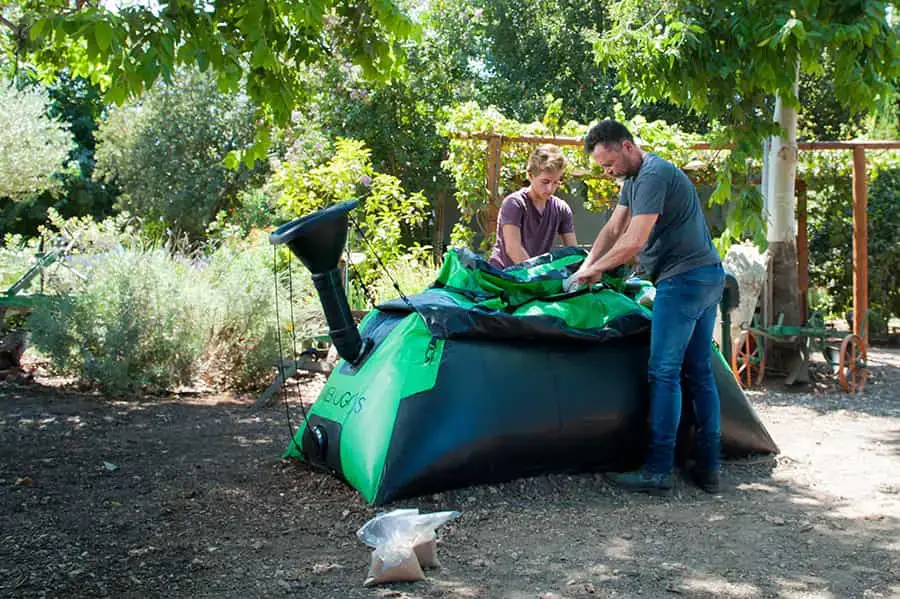 The Homebiogas kit is designed to be easily shipped in a single box, and their stated time to actually ‘set up’ and have the system ready is about one hour, and can be done without assistance. The pricing currently is set at $650 USD, with additional cost for shipping, depending on where in the world you want the product sent.
The Homebiogas kit is designed to be easily shipped in a single box, and their stated time to actually ‘set up’ and have the system ready is about one hour, and can be done without assistance. The pricing currently is set at $650 USD, with additional cost for shipping, depending on where in the world you want the product sent.
Summary – Home Biogas
Home biogas is a great solution for many, even with the some small limitations to the amount of gas produced, it remains a great alternative solution that can provide a much needed resource. We love these products, and think they make a great addition to every home’s resource mix, and is definitely worth considering, especially for those who live in warmer climates. For some other great articles on related topics, check out our Off-Grid Power Solutions article and video, and learn even more about how to supplement your resources using renewable solutions.
Let us know your thoughts, as we love to hear from you!! Be sure to Join Us to get future updates and other great inspirations and ideas from TAG Level.


















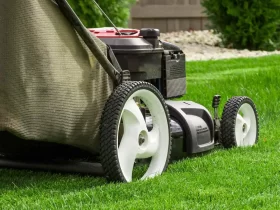



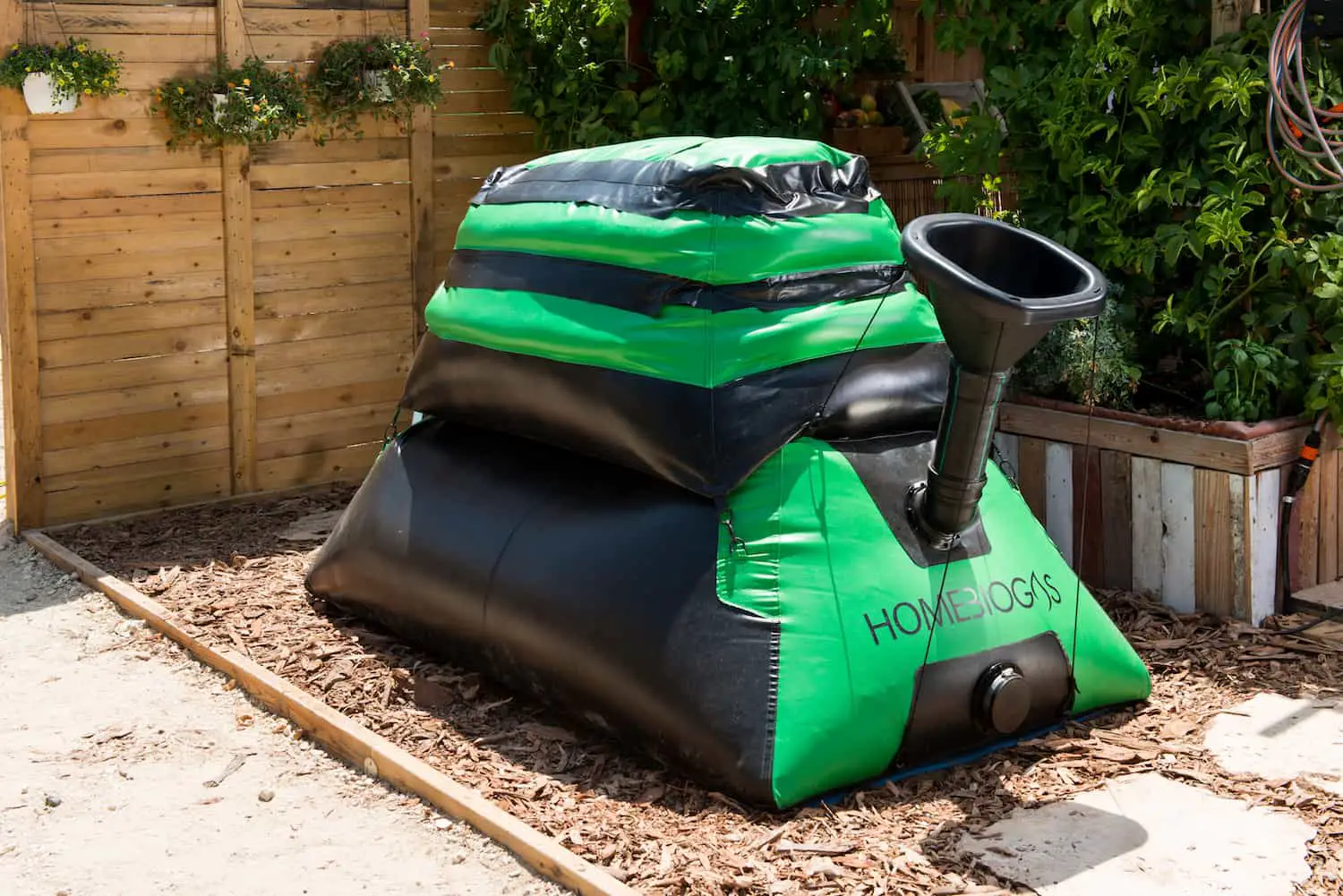








Leave a Reply